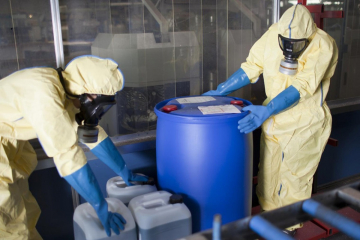On March 13, 2018, The U.S. Environmental Protection Agency’s (EPA) administrator, E. Scott Pruitt, issued a memorandum titled Project Emissions Accounting Under the New Source Review (NSR) Preconstruction Permitting Program. This memorandum discusses an assessment the EPA has undertaken of the NSR program regarding interpretation and implementation of the preconstruction permitting requirements under the NSR provisions of the Clean Air Act (CAA). This guidance memorandum is the result of the current legislature’s priorities for streamlining regulatory permitting requirements for manufacturing.
Clarification of Regulatory and EPA Policy Nomenclature
The requirements of NSR have long been misinterpreted due to nomenclature. The memorandum serves to clarify the nomenclature used in the regulations and associated EPA policies that have been sources of confusion and uncertainty. The NSR program termed the act of determining if a project resulted in a significant emissions increase or decrease as “emissions netting.” The EPA guidance memorandum states that the term “project emissions accounting” is a more appropriate term and serves to identify the project as a whole when determining NSR applicability, a two-step process for comparing the major source’s emissions before and after the project is constructed.
Step one of the process requires a determination of whether the project, by itself, is projected to result in a significant emissions increase. If such an increase is projected to occur, the process moves to step two, where an evaluation is made as to whether the project will result in a significant net emissions increase, considering any other increases and decreases in actual emissions from the source that are contemporaneous with the particular project and are otherwise creditable.
NSR was intended to apply to changes that increase actual emissions, but it also addressed the necessity of accounting for the full and direct effect of the proposed change itself. According to the memorandum, the EPA should give attention not only to whether emissions may increase from those units that are part of the project, but also to whether emissions may at the same time decrease at other units that are also part of the project.
The term “sum of the differences” is to be considered to mean the difference between a unit’s projected actual emissions or potential to emit and its baseline actual emissions (after project completion), which may be either a positive or a negative number. In either case, whether an increase or a decrease in emissions results from the project, the values that result from summing the difference are to be taken into consideration at step one in determining the emissions impact of the project and if NSR is applicable.
Encouraging Progress in Manufacturing
“Project emissions accounting” will allow for the accounting of the true emissions impacts of the individual project itself and compare them to the threshold values of each pollutant for defining a major modification. NSR applicability will be determined at step one of the process, thereby precluding an emissions review of other projects over the contemporaneous period under step two.
Through the EPA’s clarification of the nomenclature in the memorandum, major sources that desire to undertake new projects—which can assist them in streamlining manufacturing processes and potentially lowering emissions that they formerly would not have considered under the EPA’s previous interpretations of the process for determining what constituted a major modification under the NSR program—can now do so. The memorandum suggests that the interpretation of the NSR provisions for determination of a major modification account for emissions decreases that may result from a given proposed project are to be considered at step one.
Follow us on Twitter and LinkedIn for more regulatory updates.
Want more news and insights like this?
Sign up for our monthly e-newsletter, The New Leaf. Our goal is to keep you updated, educated and even a bit entertained as it relates to all things EHS and sustainability.
Get e-NewsletterHave any questions?
Contact us to discuss your environment, health, safety and sustainability needs today.




